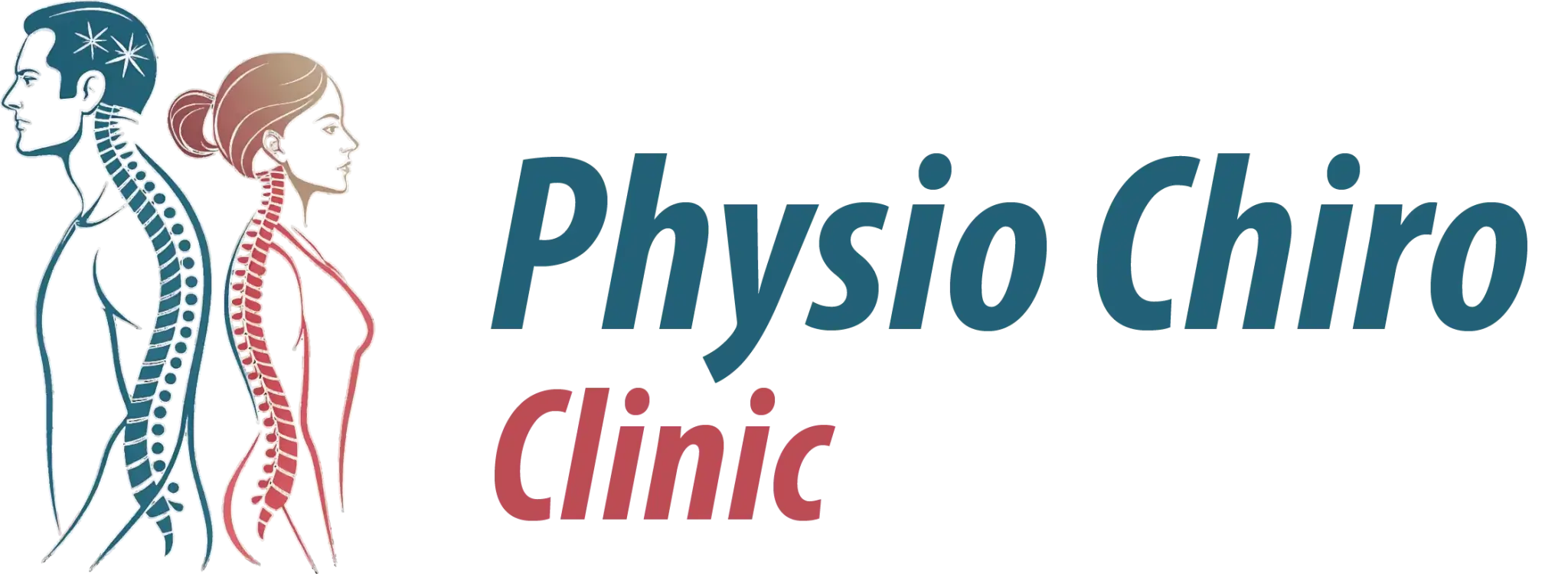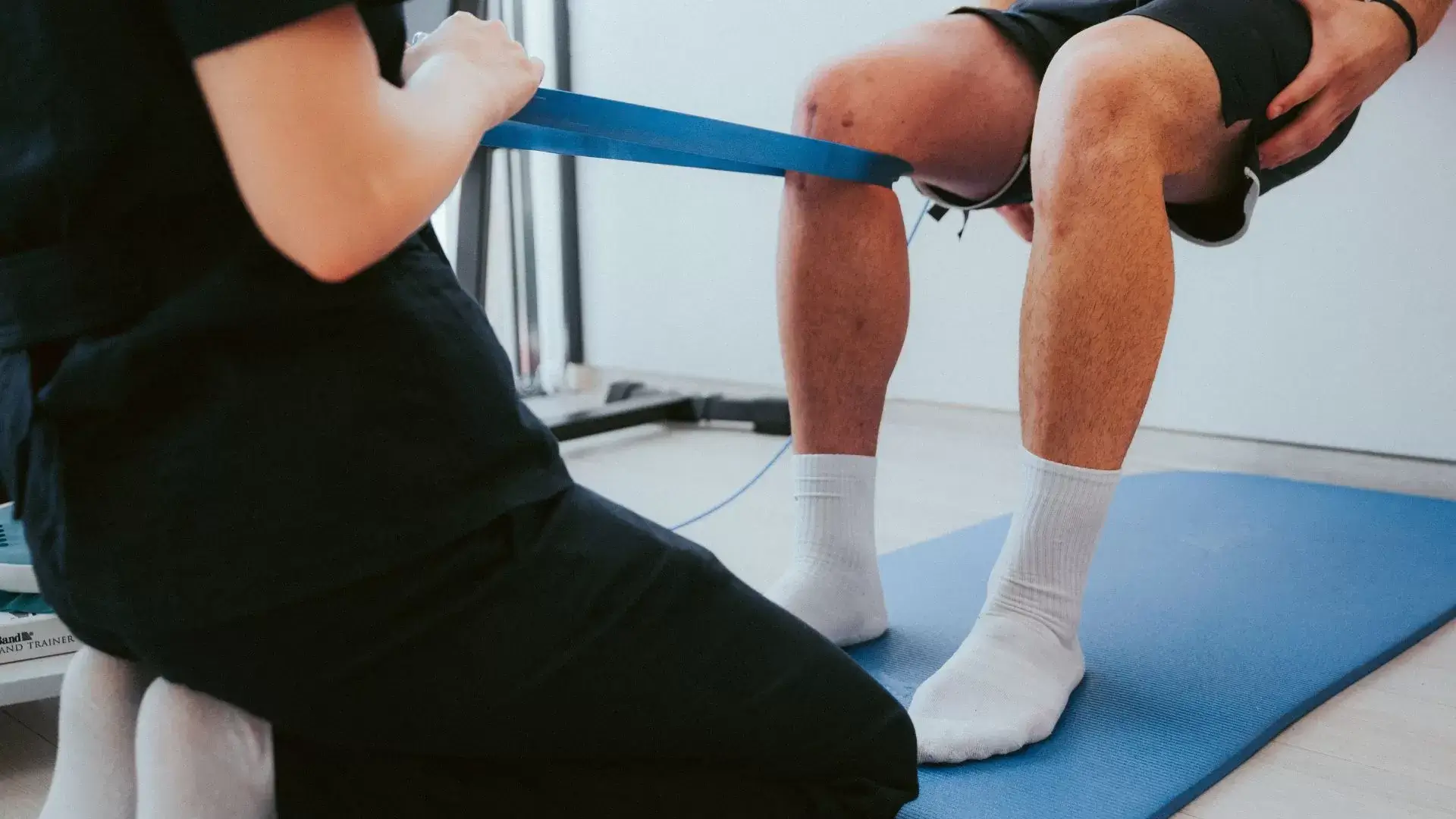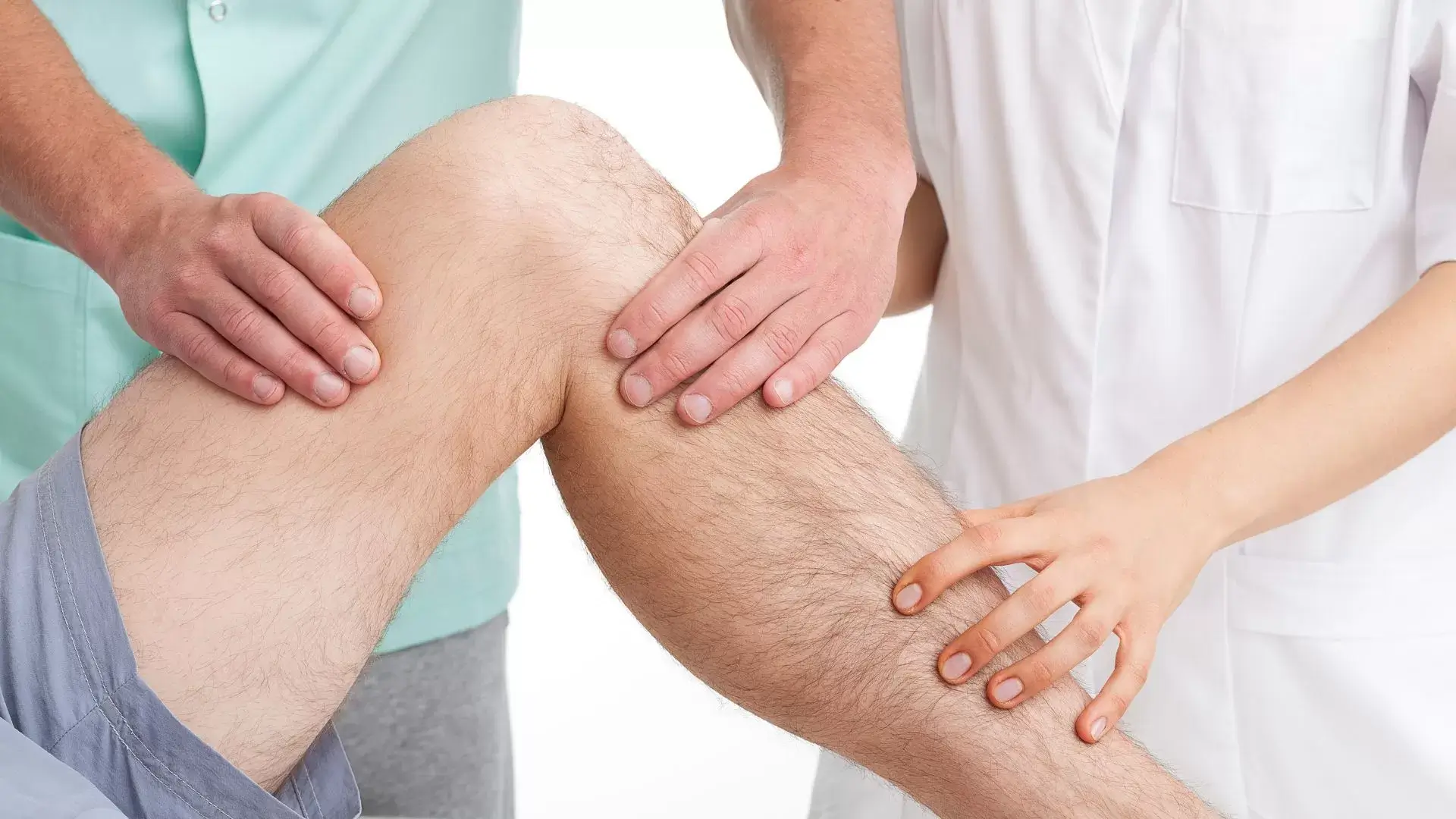Physiotherapy for Sprains and Strains We recognize how debilitating strains and sprains can be, and physiotherapy is essential in managing these injuries effectively. Initially, we focus on pain relief using the RICE method—rest, ice, compression, and elevation. As recovery progresses, we guide you through personalized exercises that enhance mobility and strengthen affected areas. Our approach not only targets immediate discomfort but also emphasizes prevention strategies tailored to your specific needs. By collaborating closely, we help guarantee a smoother recovery and equip you with knowledge for future injury prevention. There’s much more to discover about the all-encompassing support we provide for strains and sprains. About Our Physiotherapy and Chiropractic Services At Physio Chiro Clinic, we specialize in providing thorough physiotherapy and chiropractic services tailored to help you recover from strains and sprains effectively. We recognize that soft tissue injuries can be painful and disruptive, and our team is dedicated to offering personalized care for both strain treatment and sprain treatment. In our approach, we focus on injury management and muscle recovery, utilizing a combination of techniques to promote healing and restore function. Our rehabilitation for sprains includes targeted exercises and therapies designed to strengthen affected areas and prevent future injuries. We also emphasize the importance of first aid for sprains, ensuring our clients are equipped with the knowledge to manage injuries promptly. For those dealing with sports injuries, our orthopedic care extends to assessment and treatment that considers the specific demands of your activity. We believe in empowering our clients through education about their conditions, so they feel confident in their recovery journey. By integrating physiotherapy and chiropractic services, we aim to enhance your overall well-being and facilitate a faster return to the activities you love. Your health and recovery are our top priorities, and we’re here to support you every step of the way. Understanding Ankle Sprains and Strains Strains and sprains are common injuries that often occur during physical activities, and understanding their differences is essential for effective treatment and recovery. A muscle strain refers to the overstretching or tearing of muscle fibers, while a ligament sprain involves the stretching or tearing of ligaments, which connect bones at a joint. Both can lead to joint pain, swelling, and inflammation, making it imperative for us to recognize the signs early. In cases of muscle strain, we may experience localized tenderness and limited mobility, whereas ligament sprains often result in instability around the affected joint. Tendon strains, similarly, can occur when the tendons connecting muscles to bones are overstretched. All these injuries contribute to soft tissue damage, which can impede our physical activities. To promote injury prevention, it’s essential to engage in proper warm-up exercises, maintain strength and flexibility, and listen to our bodies during activities. By understanding strains and sprains, we can better manage symptoms and implement effective treatment strategies, ensuring a smoother path to recovery and reducing the risk of future injuries. Common Causes of Strains and Sprains Understanding the common causes of strains and sprains helps us recognize situations where we’re more likely to sustain these injuries, allowing us to take preventive measures during physical activities. Strains and sprains often occur due to acute sprains, such as when we twist an ankle or bend a knee awkwardly. Ankle sprains and wrist sprains are particularly frequent in sports or activities that involve quick changes in direction. Additionally, chronic strains can develop over time, especially due to overuse injuries from repetitive motions. This is common in work-related injuries, where we may not be using proper ergonomics or taking sufficient breaks. Joint instability can also play a significant role, as weakened muscles around a joint may lead to a higher risk of injury. Tendon injuries and muscle tears are other causes we should be aware of, often resulting from sudden, forceful movements or inadequate warm-up. By understanding these common causes, we can take proactive steps to strengthen our bodies, improve flexibility, and minimize the risk of strains and sprains during both our recreational and work-related activities. Symptoms of Strains and Sprains Recognizing the symptoms of strains and sprains is essential for prompt treatment and recovery, as these injuries can lead to considerable discomfort and impaired mobility if left unaddressed. Strain symptoms often include pain, swelling, bruising, and limited range of motion in the affected area. For instance, a back strain may cause sharp pain in the lower back, while a shoulder strain can result in discomfort when lifting or reaching. In the case of a hamstring strain or quadriceps strain, we might experience tightness and difficulty walking. Groin strains often present as pain in the inner thigh, which can hinder movement. Cross strains can cause discomfort in multiple areas, making it challenging to perform daily activities. When it comes to sprain symptoms, we may notice swelling, tenderness, and instability in the affected joint, indicating a possible ligament injury. Recognizing these signs early can considerably improve our outcomes. By understanding strain and sprain symptoms, we can seek appropriate soft tissue rehabilitation and prevent further complications, ensuring a smoother recovery process. Diagnosing Strains and Sprains Accurate diagnosis of strains and sprains is vital for developing an effective treatment plan that addresses our specific needs and promotes ideal recovery. When we seek help for a potential injury, we undergo a thorough strain diagnosis or sprain diagnosis to identify the extent of the damage. This typically involves evaluating symptoms such as bruising, tenderness, and limited range of motion. During the evaluation, our healthcare provider may look for signs of a ligament tear or a tendon tear, which can greatly impact our treatment options. Early intervention is essential, especially for acute strain care, as it aids in soft tissue repair and prevents further complications. Once we have a clear diagnosis, we can proceed to discuss physical therapy for strains. This tailored approach will focus on restoring function, reducing pain, and improving mobility. By understanding our specific injuries and the best course of action, we can work together to achieve ideal recovery, ensuring we get back
Physiotherapy for Sports injuries
Physiotherapy for Sports Injuries We focus on specialized physiotherapy for sports injuries, catering to the unique recovery needs of athletes. Sports injuries often stem from trauma or overuse, causing pain and functional limitations. Our tailored treatment plans promote healing and restore function through targeted exercises and techniques. We emphasize injury prevention alongside rehabilitation, helping athletes regain strength and flexibility. By utilizing advanced methods like kinesiology taping and cryotherapy, we enhance recovery outcomes. Our holistic approach also integrates sports nutrition to support overall performance. Explore how our inclusive strategies can bolster your recovery and performance further. About Our Physiotherapy and Chiropractic Services At Physio Chiro Clinic, we specialize in providing thorough physiotherapy and chiropractic services tailored to effectively address sports injuries and enhance recovery. Our approach to injury management is extensive, focusing on both acute injuries and post-injury rehabilitation. We recognize that each athlete’s journey is unique, and that’s why our sports injury treatment plans are customized to meet individual needs. Our dedicated team utilizes a combination of physical therapy techniques and rehabilitation exercises to promote healing and restore functionality. We emphasize sports rehabilitation, ensuring that our clients regain their strength and mobility while minimizing the risk of re-injury. Our evidence-based methods not only facilitate recovery but also play a vital role in injury prevention. Understanding Sports Injuries: Causes and Types Understanding the various causes and types of sports injuries is essential to developing effective treatment strategies that support recovery and prevent future incidents. Athletic injuries often stem from sports-related trauma, which can manifest in several forms. Common injuries include sprains and strains, typically resulting from sudden movements or improper techniques. Fractures and dislocations, while less frequent, can occur during high-impact activities or falls. Overuse injuries are another significant category, arising from repetitive stress on the body, leading to chronic injuries like tendonitis or stress fractures. These soft tissue injuries often affect muscles, tendons, and ligaments, causing pain and limiting mobility. Injury diagnosis is vital to identify the specific type and cause of the injury, allowing us to tailor our treatment approach effectively. By understanding these diverse injury types and their origins, we can better educate athletes on injury prevention strategies. This knowledge empowers them to make informed decisions about their training regimens and recovery processes, ultimately enhancing their performance while minimizing the risk of future injuries. Together, we can foster a safer sporting environment for all athletes. How Physiotherapy Aids Sports Injury Recovery Physiotherapy plays an essential role in the recovery process for athletes suffering from sports injuries by employing targeted techniques that promote healing, restore function, and prevent recurrence. In the field of sports medicine, we focus on individualized sports therapy plans that address specific injury risk factors, including ligament injuries, muscle tears, and joint injuries. As we work together, we’ll initiate a thorough assessment to determine the extent of the injury and create a personalized rehabilitation program. This often includes a combination of manual therapy, therapeutic exercises, and modalities designed to enhance sports recovery. During this phase, we emphasize the importance of sports conditioning to rebuild strength and flexibility, ensuring a safe return to athletic training. Furthermore, we implement structured return-to-sport programs that systematically guide athletes back to their previous performance levels while minimizing the chances of re-injury. By fostering an understanding of biomechanics and movement patterns, we empower our clients to recognize potential challenges and adjust their training accordingly. In this collaborative effort, our goal is to facilitate a successful recovery, allowing athletes to regain confidence and excel in their respective sports. Physiotherapy for Sprains, Strains, and Soft Tissue Injuries Addressing sprains, strains, and soft tissue injuries requires a thorough approach that integrates assessment, treatment, and rehabilitation strategies tailored to each athlete’s unique needs. We begin with a detailed evaluation to determine the extent of the injury, enabling us to develop a personalized treatment plan. Kinesiology taping can provide support and reduce pain, while bracing for injuries helps stabilize affected areas during recovery. Our rehabilitation process emphasizes strength training, flexibility exercises, and mobility exercises to restore function and prevent future injuries. We focus on gradually increasing the intensity of these exercises, ensuring athletes regain their full range of motion and strength. Education plays an important role in sports injury prevention tips. We guide athletes on proper warm-up routines, appropriate footwear, and techniques to minimize the risk of sprains and strains. By emphasizing a proactive approach, we empower athletes to take charge of their recovery and overall physical health. Rehabilitation for Ligament Injuries: ACL and Meniscus Tears Rehabilitation for ligament injuries, such as ACL and meniscus tears, involves a structured program designed to restore strength, stability, and function to the affected knee. At sports injury clinics, our focus is on providing extensive orthopedic care tailored to each individual’s needs. Early intervention is essential, as it helps minimize cartilage damage and promotes efficient athletic recovery. Initially, we may emphasize gentle range-of-motion exercises to reduce stiffness. As healing progresses, we’ll incorporate strengthening exercises targeting the quadriceps and hamstrings, which are fundamental for stabilizing the knee. Sports-specific training becomes a key component of rehabilitation, allowing athletes to regain confidence and return to their sport safely. Understanding sports biomechanics is critical in this process. It helps us identify any movement patterns that could contribute to further knee injuries or complications. We’ll also educate our clients on injury prevention strategies, ensuring they’re equipped to handle the demands of their sport effectively. Ultimately, our goal is to facilitate a smooth shift back to full activity, minimizing the risk of re-injury while maximizing performance. With dedication and the right rehabilitation plan, we can overcome the challenges posed by ACL and meniscus tears. Managing Shoulder Injuries: Rotator Cuff and Dislocations Managing shoulder injuries, particularly rotator cuff tears and dislocations, requires a thorough approach to restore mobility and strength while guaranteeing ideal recovery. We recognize that a rotator cuff injury can severely impact athletic performance, necessitating a combination of therapies to facilitate healing. Initially, we may employ cryotherapy to reduce inflammation and pain, followed by heat
Chiropractor for Sports injuries
Chiropractor for Sports Injuries We specialize in chiropractic care for sports injuries, utilizing proven techniques to promote recovery and enhance athletic performance. Our thorough assessments help us identify the root causes of pain, allowing us to create personalized treatment plans tailored to each athlete’s unique needs. We focus on treating various injuries, including sprains, strains, and overuse conditions, using a holistic approach that combines chiropractic adjustments with rehabilitation exercises and nutritional support. Our commitment is to empower athletes to recover stronger and more resilient. By exploring our methodologies further, you’ll discover additional insights into maximizing your recovery and performance. About Our Physiotherapy and Chiropractic Services At Physio Chiro Clinic, we offer an extensive range of physiotherapy and chiropractic services tailored to address sports injuries and enhance overall athletic performance. Our team is dedicated to providing effective sports injury treatment, focusing on both acute injuries and chronic injuries. We understand the complexities of injury management, and our approach encompasses thorough assessments to identify the root causes of pain and dysfunction. Through targeted sports rehabilitation programs, we guide athletes through recovery, guaranteeing a smooth shift from injury to peak performance. Our post-injury rehabilitation strategies are designed to restore strength, flexibility, and confidence, allowing individuals to return to their sport safely and effectively. In addition to recovery, we emphasize injury prevention through personalized sports-specific training. By educating athletes on proper techniques and body mechanics, we aim to reduce the risk of future injuries. Our commitment to ongoing support guarantees that each athlete receives the tools necessary for long-term success. In our clinic, we believe that ideal physical health is attainable, and we’re here to help every step of the way. Together, we can enhance your athletic journey, enabling you to perform at your best while minimizing the risk of injury. Understanding Sports Injuries: Causes and Types Sports injuries can arise from a variety of causes, including improper technique, overexertion, and inadequate warm-up routines, leading to different types of injuries that can impact our performance and overall well-being. Understanding these injuries is vital for effective athletic training and sports recovery. Among the most common types are sprains and strains, which affect ligaments and muscles, respectively. We often encounter overuse injuries, resulting from repetitive movements that can lead to soft tissue injuries like muscle tears. Fractures and dislocations are more severe sports-related trauma that may occur during high-impact activities. It’s essential to recognize the signs of these injuries early. Sprains can manifest as swelling and pain in the affected area, while strains may cause muscle tightness or spasms. Dislocations often present with visible deformity and severe pain. The Role of Chiropractors in Sports Injury Management Chiropractors play an essential role in managing sports injuries by employing targeted techniques to alleviate pain, restore function, and enhance overall athletic performance. In the area of sports medicine, we focus on understanding injury risk factors, such as improper biomechanics and inadequate sports conditioning, which can lead to common issues like ligament injuries, knee injuries, and shoulder dislocations. Our approach often integrates various methods, including cryotherapy to reduce inflammation and pain, as well as strength training to improve stability and resilience against future injuries. By evaluating athletes in detail, we develop personalized return-to-sport programs that guarantee a safe and efficient passage back to their respective activities. Incorporating orthopedic care principles, we collaborate with other healthcare professionals to create a holistic treatment plan, addressing not just the immediate injury but also preventative strategies. This collaborative effort fosters a supportive environment for athletes, helping them regain their peak performance while minimizing the likelihood of future injuries. Ultimately, our goal is to empower athletes with the knowledge and tools necessary for ideal recovery and ongoing athletic success. Chiropractic Treatment for Sprains, Strains, and Soft Tissue Injuries In managing sprains, strains, and soft tissue injuries, we utilize specific chiropractic techniques to promote healing, reduce pain, and restore functional mobility. Our approach is informed by sports injury research, allowing us to implement evidence-based methods tailored to each individual’s needs. For conditions like ankle sprains, wrist sprains, and calf strains, we focus on gentle adjustments and manual therapies that enhance blood flow and alleviate tension. We also address hamstring strains and groin strains through targeted treatments that encourage recovery while minimizing discomfort. In cases of shoulder impingement, we incorporate specialized exercises aimed at enhancing flexibility and mobility. These flexibility exercises and mobility exercises are essential in preventing future injuries and improving overall performance. Addressing Ligament and Joint Injuries with Chiropractic Care Effective management of ligament and joint injuries often involves a combination of targeted chiropractic adjustments and therapeutic techniques designed to promote healing and restore function. When we consider injuries such as an ACL tear or a meniscus tear, our approach focuses on maximizing biomechanics to support recovery. For conditions like rotator cuff injuries and cartilage damage, we utilize specific adjustments that enhance joint mobility and reduce pain. In addition, we also address back injuries and hip injuries through personalized treatment plans that may include kinesiology taping and bracing for injuries to provide additional support and stability. Our understanding of sports biomechanics allows us to identify underlying issues contributing to these injuries, ensuring we aren’t just treating the symptoms but also addressing root causes. In some cases, if conservative measures aren’t sufficient, we may discuss the possibility of sports surgery as an option. Through our all-encompassing approach, we aim to facilitate a smoother recovery process, helping athletes return to their sport stronger and more resilient. Together, we can work towards achieving ideal health and performance in the face of ligament and joint injuries. Specialized Care for Shoulder Injuries: Rotator Cuff and Dislocations Addressing shoulder injuries, particularly rotator cuff injuries and dislocations, requires a tailored approach that focuses on restoring stability and function to this complex joint. We acknowledge that these injuries can greatly impact athletic performance, which is why we prioritize effective treatment modalities. Our chiropractic care often includes heat therapy and ultrasound therapy to reduce inflammation and promote healing. Heat therapy relaxes the muscles




